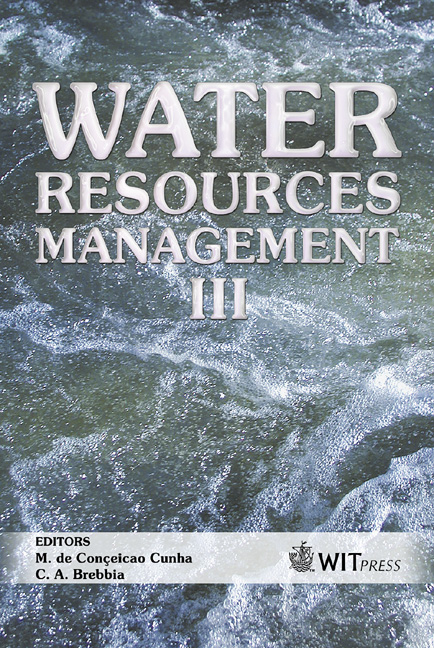Prediction Of Bed Form Height In Straight And Meandering Compound Channels
Price
Free (open access)
Transaction
Volume
80
Pages
10
Published
2005
Size
443 kb
Paper DOI
10.2495/WRM050321
Copyright
WIT Press
Author(s)
R. D. Karamisheva, J. F. Lyness, W. R. C. Myers, J. O’Sullivan & J. B. C. Cassells
Abstract
A comparative analysis was made of several prediction methods for bed form dimensions. The prediction methods were applied to experimental data obtained from the large-scale UK Flood Channel Facility. Inbank and overbank flows in straight and meandering channels were studied. Comparisons between computed and measured average bed form heights indicated that most formulae predict the bed form height in straight channels better than in meandering channels. The Karim [6] and the Van Rijn [10] methods gave the best predictions of the bed form height for straight channels. For meandering channels, the Julien and Klaassen formula [4] gave the smallest average discrepancy between the predicted and the experimental bed form heights. Overall results indicated that the Karim method [6] gives the best prediction of bed form height with an average discrepancy ratio of 1.23 and 95% of the values within the range of 0.5– 2.0. For the studied data, the multiple regression analysis showed that the ratio of bed form height and mean particle diameter, h/D, correlate best to the ratio of dimensionless shear stress and Froude number. Keywords: bed form dimensions, alluvial compound channels, bed form prediction formulae. 1 Introduction The accurate prediction of flow resistance in alluvial channels is very important in hydraulic engineering practice. Flow resistance is difficult to quantify because of the mutual interaction between the flow and the movable bed. The complexity of hydraulic factors influencing the energy loss increases for overbank flows and the meandering planforms of compound channels. The total resistance to flow is
Keywords
bed form dimensions, alluvial compound channels, bed form prediction formulae.





